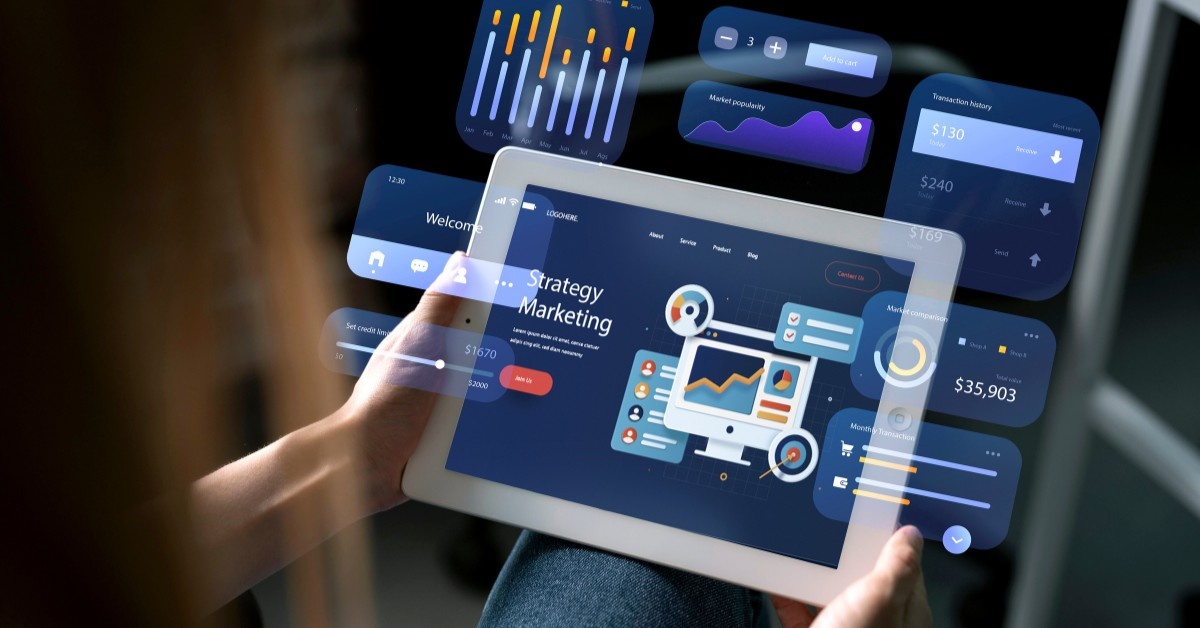Performance Marketing 2026 Plan: Why ROI Alone Won’t Define Performance Anymore
The hidden gap between marketing ROI and real business performance
ROI once was a safe metric on a marketing dashboard. It was neat, linear, and easy to defend in board meetings. Yet today, that same number is starting to feel irrelevant.
We meet marketing leaders every week who say, “Our ROI looks fine, but growth feels slower.”
That’s the problem. ROI tells you how efficiently your money is being returned. It doesn’t tell you whether your brand became more wanted, whether you created real demand, or if your category share actually grew.
Performance marketing has outgrown its own definition. It measures impact through incremental growth, attention, and customer value. The only question that remains in our minds is: what should define performance in 2026?
Why 2025 changed the measurement rules
The shift didn’t happen overnight. It began when algorithms stopped chasing pure clicks and started optimising for behaviours that signal intent and attention.
Apple’s privacy walls, Google’s cookie phase-out, and the rise of AI-powered bidding forced performance marketers to rethink what success means.
Every platform now claims to optimise for “value.” That value is built not on click trails but on modelled data that measures who stays, who acts, and who talks about you afterwards.
We entered 2026 with new metrics that matter more than ever:
- Attention quality - how long someone actually engages with your message
- Creative match rate - how aligned the creative is with the audience context
- Incremental lift - what the campaign adds beyond organic demand
- Lifetime value (LTV) - what each customer contributes across time
- Share of Search - how often your brand is typed compared to competitors
These signals define marketing health. Yet most dashboards still celebrate short-term ROI.
The problem with treating ROI as the north star
ROI as a single figure is a misleading comfort zone. It rewards cheap conversions and penalises long-term plays. It can look great when you over-discount, under-invest in creative, or stop brand spending altogether.
Here’s what ROI doesn’t show, and you cannot compromise on this information:
- The cost of buying back churned customers.
- The brand equity was lost to over-promotion.
- The missed demand wasn’t captured because the discovery was weak.
- The influence of untracked touchpoints on eventual purchase.
By 2026, marketing leaders will know that efficiency metrics without context are empty victories.
What “performance” really means now
We’ve redefined performance to mean business performance, not platform performance.
This means looking at metrics that connect campaign actions to enterprise outcomes.
The new scorecard has three levels:
- Growth metrics: incremental revenue, new buyer penetration, repeat rate, and contribution margin.
- Demand signals: Share of Search, brand query velocity, referral volume.
- Creative effectiveness: attention seconds, completion rate, and emotional recall.
A campaign that wins on these fronts sustains growth. A campaign that wins only on ROI burns short-term gain.
What the Numbers Reveal About Where Performance Is Headed in 2026
Global evidence supports this change:
- Longitudinal studies show that attention explains business outcomes better than viewability.
- Share of Search consistently predicts market-share shifts before sales data.
- Platforms like Google and Meta now integrate lift testing directly to measure incrementality.
- Brands that balance long-term equity with short-term activation outperform in total shareholder return.
Marketing is finally re-centring around the impact it creates in the market, not impressions.
How attention became the new currency
Attention is measurable, comparable, and directly tied to memory. When we track how long someone watches, reads, or pauses on a piece of content, we’re not just counting seconds; instead, we’re capturing how well the message was understood.
We’ve seen campaigns with high viewability but low attention seconds fail to move any metric. Strong attention correlates with repeat visits, higher basket size, and stronger recall in follow-ups.
Attention has become a performance KPI because it captures human behaviour rather than platform vanity.
Why Share of Search matters more than Share of Voice
Share of Voice was built for a pre-digital world where spend equalled exposure.
In 2026, Share of Search shows how visible your brand is when people act.
It’s an earned metric, not a bought one.
A rising Share of Search means more people are seeking you out unprompted. It reflects awareness, trust, and relevance.
When tracked monthly, it becomes an early signal of brand health, weeks before revenue responds.
An example of a D2C FMCG Brand to understand Performance Marketing
To illustrate the shift, let’s look at an imaginary consumer brand.
Who they are
Nativic Organic is a D2C FMCG brand that sells clean pantry staples, organic oils, grains, and snacks. Based in Mumbai, it built its audience through social commerce on Instagram, YouTube, and TikTok, as well as marketplaces.
By late 2024, their sales had plateaued. ROI on Meta campaigns was still 4.3x, yet growth had stalled. Contribution margin per order was slipping. Discounts were doing the heavy lifting.
Their dashboard celebrated ROI but ignored deeper insights into their brand’s performance.
The team realised:
- 42% of revenue came from discount seekers.
- Repeat purchases within 90 days had dropped from 34% to 24%.
- Share of Search had declined as competitors invested in brand storytelling.
ROI looked strong because promotions inflated short-term conversions. But brand health was eroding quietly.
What was the pivot point?
In early 2025, Nativic Organic’s leadership redefined what performance meant for the business. The team realised that growth could no longer depend on discount-driven spikes or vanity ROI figures. They set three clear pivots:
- Replace 'spend efficiency' with 'customer value creation'.
- Optimise for attention, retention, and search velocity.
- Measure success by lifetime value growth, not discount redemption.
What interventions were brought in by them?
1. Rebuilt the creative system around attention.
Shifted focus from click-through rates to attention per impression as the primary creative KPI.
2. Produced contextual, product-in-use content.
Created short, high-attention video formats that showed real people using products across social platforms.
3. Strengthened repeat behaviour.
Introduced a replenishment program with loyalty credits to encourage second and third purchases.
4. Moved from promotions to proof.
Launched a brand storytelling campaign that educated buyers on ingredient sourcing and product transparency.
5. Balanced frequency and value.
Trimmed discount depth by 30% while increasing content frequency to maintain share of voice without eroding margin.
6. Added accountability through experimentation.
Implemented bi-weekly lift tests across paid channels to isolate true incremental sales and guide budget reallocations.
What was the verdict for the brand
Over six quarters, Nativic Organic moved from discount-led spikes to sustained growth. Lifetime value rose sharply, attention and search visibility strengthened, and revenue quality improved even though ROI stayed nearly flat.
While ROI remained almost flat, lifetime value, attention scores, and search visibility all rose steadily, indicating a stronger brand and a healthier demand pipeline.

This is what performance looks like in 2025: balanced, resilient, and brand-driven.
How to reset your performance framework for 2026
1. Redefine your primary KPIs
Retain ROI and ROAS for hygiene, but promote new metrics to primary status:
- Incremental conversions verified through lift tests.
- Customer lifetime value by cohort.
- Attention quality (scroll stops, completion rate).
- Share of Search by brand and category.
- Contribution margin after media and discount.
This combination creates a holistic view of business performance.
2. Build a 90-day reset plan
- Weeks 1-2:
Audit existing dashboards. Identify vanity metrics that do not inform decisions. - Weeks 3-6:
Run one lift test per central channel to establish a baseline for incrementality.
Refresh three hero creatives with attention-first design principles. - Weeks 7-10:
Start with Search share-of-tracking and a content rhythm that reinforces discovery.
Integrate retention and replenishment triggers into CRM. - Weeks 11-12:
Publish an internal performance scorecard that blends ROI with LTV and attention.
Use that to plan next quarter’s spend allocation.
3. Rebuild how your teams talk about success
Teach your teams to describe performance in sentences, not numbers.
Instead of “Meta ROI was 4.5x,” say “Our Meta campaigns generated 18% incremental lift in new buyers and improved 60-day repeat rate.”
Creative Intelligence in performance marketing
Creative intelligence is the systematic study of what creative formats drive comprehension and emotion; it is now central to performance marketing.
Every algorithm today rewards creative differentiation. AI-based media buying has made targeting a commodity. What separates strong brands from the rest is how they tell their story and how long they hold attention.
Marketers need to test for human understanding, not just engagement rate.
The best teams use:
- Attention-testing tools to identify content that holds eyes longer.
- Narrative mapping to ensure clarity within the first three seconds.
- Cross-platform creative calibration to maintain brand tone.
At FTA Global, we’ve seen brands double their retention rate by pairing creative intelligence with data-driven sequencing. The message that lands first influences every downstream metric.
What CMOs building 2026 budgets should know
Begin with the end, not the channel. Budgets should follow payback logic. Target 120 days payback for new buyers and 60 days payback for returning cohorts. Budget split by growth function
- 50% for always-on demand creation: creative testing, education content, influencer and partner distribution.
- 30% for lower-funnel capture: high-intent search, marketplaces, remarketing.
- 10% for retention: email, loyalty, and CRM programs.
- 10% reserved for experimentation: lift tests, new channels, and pricing experiments.
Try making incrementality mandatory
Run geo or audience holdouts on every evergreen campaign.
- Holdout size: 5-10% of traffic.
- Detectable lift goal: 5-10% relative change.
- Readout cadence: bi-weekly tests, monthly executive rollups.
Performance marketing unites creativity, data, and intent
The conversation around performance has matured.
We’ve moved from “How much did we get back?” to “What value did we create?”
Brands that embrace this integrated view will compound faster than those that chase short-term efficiency gains. The future of performance belongs to those who balance math with meaning.
While ROI remained almost flat, lifetime value, attention scores, and search visibility all rose steadily, indicating a stronger brand and a healthier demand pipeline.

This is what performance looks like in 2025: balanced, resilient, and brand-driven.
How to reset your performance framework for 2026
1. Redefine your primary KPIs
Retain ROI and ROAS for hygiene, but promote new metrics to primary status:
- Incremental conversions verified through lift tests.
- Customer lifetime value by cohort.
- Attention quality (scroll stops, completion rate).
- Share of Search by brand and category.
- Contribution margin after media and discount.
This combination creates a holistic view of business performance.
2. Build a 90-day reset plan
- Weeks 1-2:
Audit existing dashboards. Identify vanity metrics that do not inform decisions. - Weeks 3-6:
Run one lift test per central channel to establish a baseline for incrementality.
Refresh three hero creatives with attention-first design principles. - Weeks 7-10:
Start with Search share-of-tracking and a content rhythm that reinforces discovery.
Integrate retention and replenishment triggers into CRM. - Weeks 11-12:
Publish an internal performance scorecard that blends ROI with LTV and attention.
Use that to plan next quarter’s spend allocation.
3. Rebuild how your teams talk about success
Teach your teams to describe performance in sentences, not numbers.
Instead of “Meta ROI was 4.5x,” say “Our Meta campaigns generated 18% incremental lift in new buyers and improved 60-day repeat rate.”
Creative Intelligence in performance marketing
Creative intelligence is the systematic study of what creative formats drive comprehension and emotion; it is now central to performance marketing.
Every algorithm today rewards creative differentiation. AI-based media buying has made targeting a commodity. What separates strong brands from the rest is how they tell their story and how long they hold attention.
Marketers need to test for human understanding, not just engagement rate.
The best teams use:
- Attention-testing tools to identify content that holds eyes longer.
- Narrative mapping to ensure clarity within the first three seconds.
- Cross-platform creative calibration to maintain brand tone.
At FTA Global, we’ve seen brands double their retention rate by pairing creative intelligence with data-driven sequencing. The message that lands first influences every downstream metric.
What CMOs building 2026 budgets should know
Begin with the end, not the channel. Budgets should follow payback logic. Target 120 days payback for new buyers and 60 days payback for returning cohorts. Budget split by growth function
- 50% for always-on demand creation: creative testing, education content, influencer and partner distribution.
- 30% for lower-funnel capture: high-intent search, marketplaces, remarketing.
- 10% for retention: email, loyalty, and CRM programs.
- 10% reserved for experimentation: lift tests, new channels, and pricing experiments.
Try making incrementality mandatory
Run geo or audience holdouts on every evergreen campaign.
- Holdout size: 5-10% of traffic.
- Detectable lift goal: 5-10% relative change.
- Readout cadence: bi-weekly tests, monthly executive rollups.
Performance marketing unites creativity, data, and intent
The conversation around performance has matured.
We’ve moved from “How much did we get back?” to “What value did we create?”
Brands that embrace this integrated view will compound faster than those that chase short-term efficiency gains. The future of performance belongs to those who balance math with meaning.
Do you want more traffic?

How to Scale Personalisation in ABM Without Losing Focus?
.png)
Why Small Tasks Are the Next Big Revolution in Business Efficiency?











